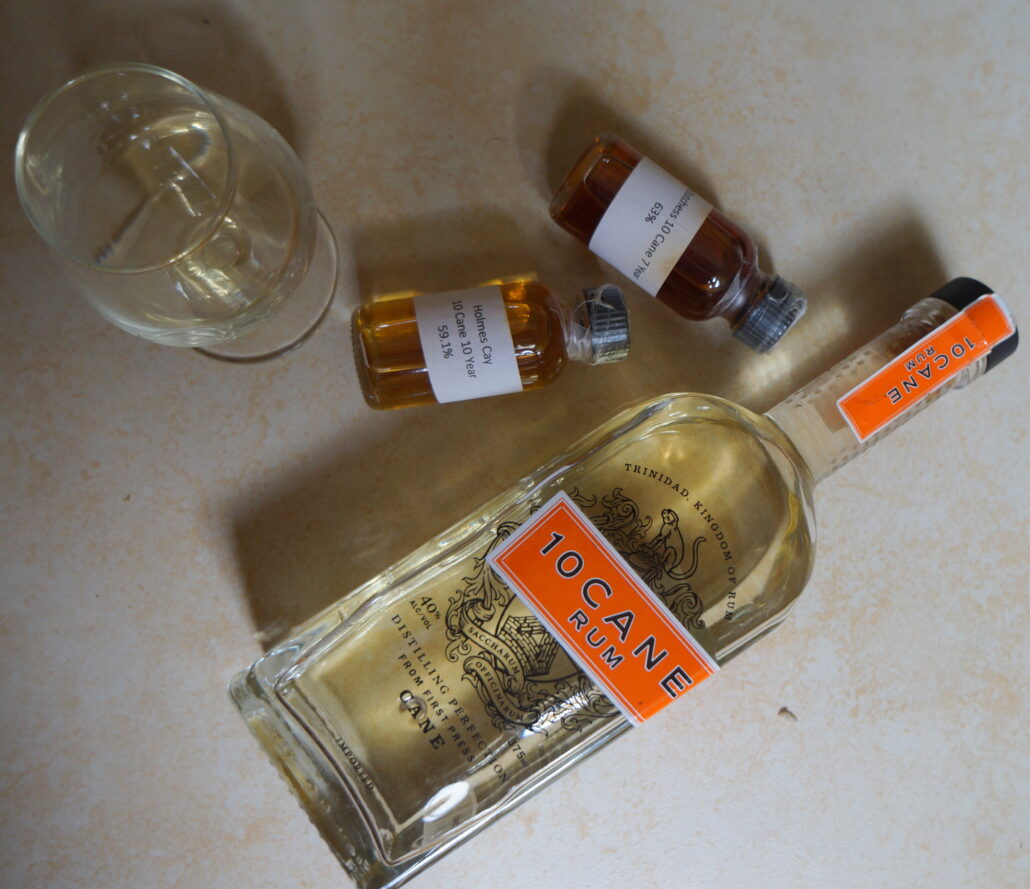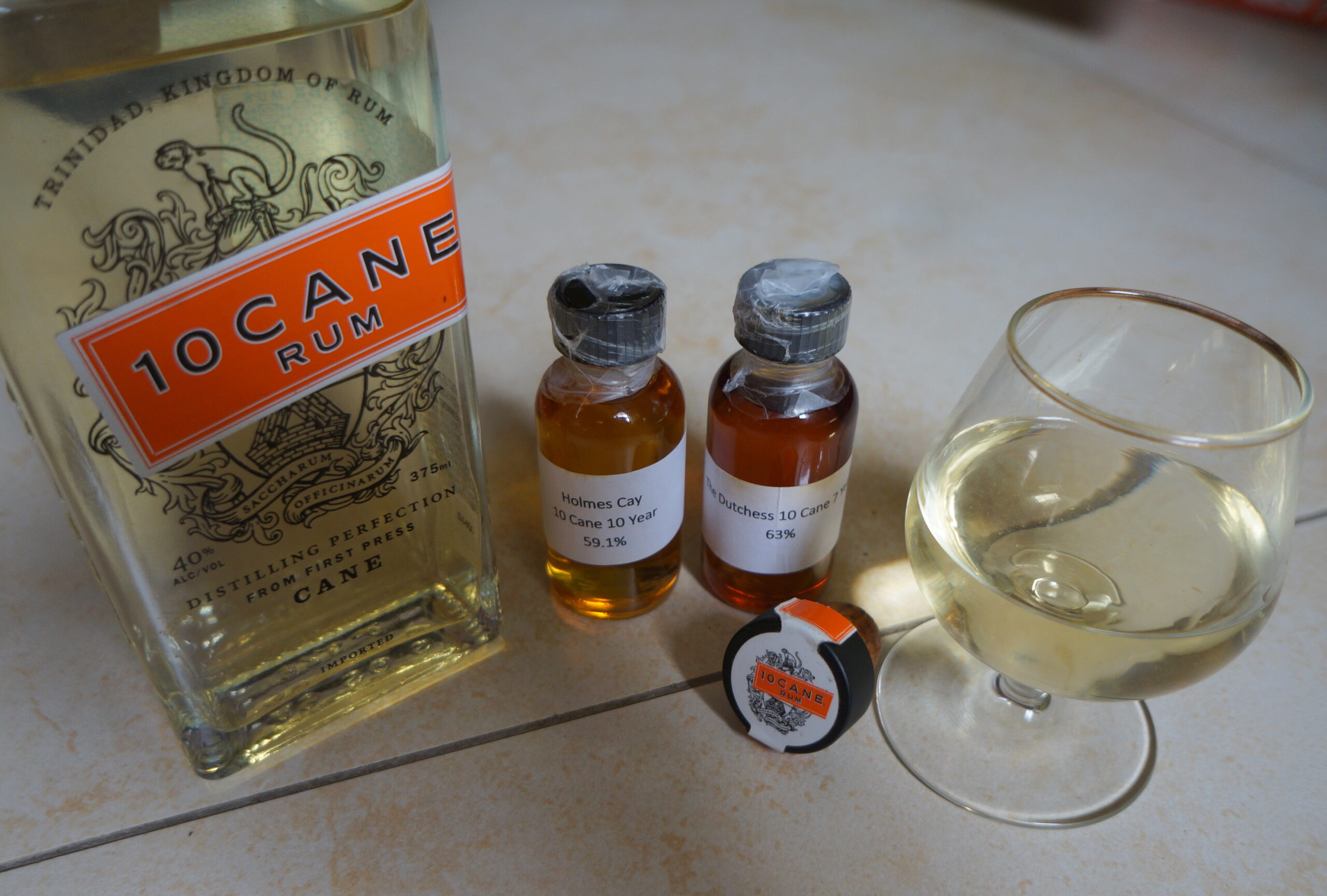10 Cane Rum has always been a topic of interest in discussions about the history of rum in Trinidad. The concept behind the brand was a radical departure from how premium rum was presented to customers in 2005 when the brand was initially launched. It did not rely on long aging or added flavors, it was light in color, and it emphasized the importance of terroir in the rum. Among rum enthusiasts, there is also considerable curiosity surrounding the short history of 10 Cane Rum; Interest in how the brand came to be, and what caused it to fail.
The tale of 10 Cane Rum started when Hennessy’s master distiller Jean Pinneau sampled a stick of freshly cut sugarcane and sought to capture that experience in a small batch, boutique rum. LVMH Moët Hennessy Louis Vuitton (LVMH), the parent company of Hennessy initially looked to Barbados, the birthplace of Caribbean rum as a starting point while also hiring a design firm from the midwest United States to come up with a brand story and a name.
The design firm came up with the name 10 Cane Rum, both as a reference to the number of parishes in Barbados and the practice of batching cut sugarcane into piles of ten. In Barbados however, things did not go according to plan. LVMH initially looked into a partnership with a local distillery but they ultimately decided that setting up their own distillery was the better course of action. They headed to Trinidad where they installed a Cognac-style copper still and the machinery required to process sugarcane and ferment sugarcane juice at the site of the former Usine Sainte Madeleine sugar factory in the south of the island. John Georges, former master distiller at the House of Angostura says that he was involved in the project to provide some assistance since Angostura was able to “easily handle the logistics of establishing the still and getting things going.” Angostura’s responsibility included sourcing sugarcane, keeping the facility running, and providing a facility to age and blend the rum.
By early 2013, Angostura announced that their partnership with LVMH had come to an end since 10 Cane Rum did not bring in the expected revenue. A representative from the company also announced that “part of the operations for 10 Cane rum was actually closed for a few years because of insufficient demand.” This was the end of 10 Cane Rum produced in Trinidad, but it was not the end of the brand. LVMH revealed that production was heading to the Foursquare Rum Distillery in Barbados in a move estimated to bring fifty million US dollars in foreign exchange to the Barbadian economy. About 10 Cane Rum, Sir David Seale, the chairman of the distillery said “it has a track record so we are not starting from zero“ and described the move to the island as “Barbados’ gain over T&T”.
10 Cane Rum would be produced in Barbados for a short time before being quietly discontinued. Some of the rum that was originally destined for use in 10 Cane would end up spending some additional time in barrels before being bought and bottled by independent rum bottlers. Among them was The Duchess, and Holmes Cay; companies known for selecting unique barrels of rum and bottling them at cask strength.
10 Cane Rum
This rum is very light and barely different from something like Fernandes Black Label. Considering the price and the hype, it’s a bit of a disappointment. There is the barest hint of rum character coming across as notes of brown sugar, but beyond that there is just this dry mineral and cereal taste.
Based on the timing of this release and the taste, I get the impression that this rum was made for vodka drinkers, and that LVMH felt that a fancy marketing campaign and a clean flavor profile would have been enough to make this rum successful. Things could have gone very differently for 10 Cane. Several years later, Renegade Rum was able to successfully do what LVMH tried to do with this brand. They set up a distillery in Grenada, and currently make rum from small batch, freshly cut sugar cane. Additionally, at the time that LVMH would have been doing their studies into the feasibility of starting a rum brand, the final nails were being put into the Caroni coffin. If they started in Trinidad, instead of with a design firm in the middle of North America, and if they partnered with Caroni instead of Angostura, the rum world would be a completely different place today.
Holmes Cay Trinidad 10 Cane 2012 – 59% ABV, 10 Years Old
There is a strong aroma of ripe mangoes, in particular, a variety called dou doux mangoes that is creamy with a slight sour tang. There is also the aroma of incense and mango blossoms at night. More fruit and spice comes to the forefront overtime; red apples, green grapes, and the barest hint of cinnamon. Some character from the original 10 Cane is still there, but it merges very well with the oak.
The Duchess 10 Cane – 63% ABV, 7 Years Old
My initial impression of this was that it was similar to the Holmes Cay 10 Cane, but spicier, woodier, and a bit harsher. On the nose, there is kola nut and wood varnish. The taste is along these lines as well, but there are some notes of cooked banana and ripe berries. Kola nut, wood varnish, and cooked bananas remain dominant, but some cacao nibs, and menthol notes also begin to show themselves.
The Holmes Cay and the Duchess are very different from each other. This is no surprise considering that even if they started as the same liquid, characteristics of each barrel would shape the character of the rum stored within. This is further compounded by the fact that each barrel would be further influenced by factors like time, humidity, and temperature. Considering how mediocre the original 10 Cane Rum was, it certainly is surprising that both independent bottlings manage to be pretty delicious.




